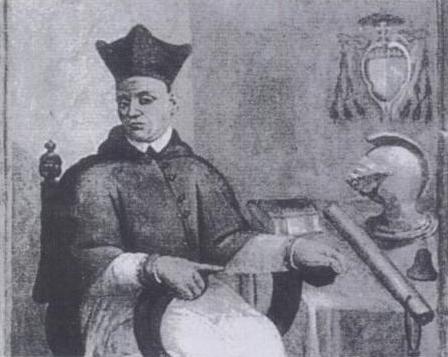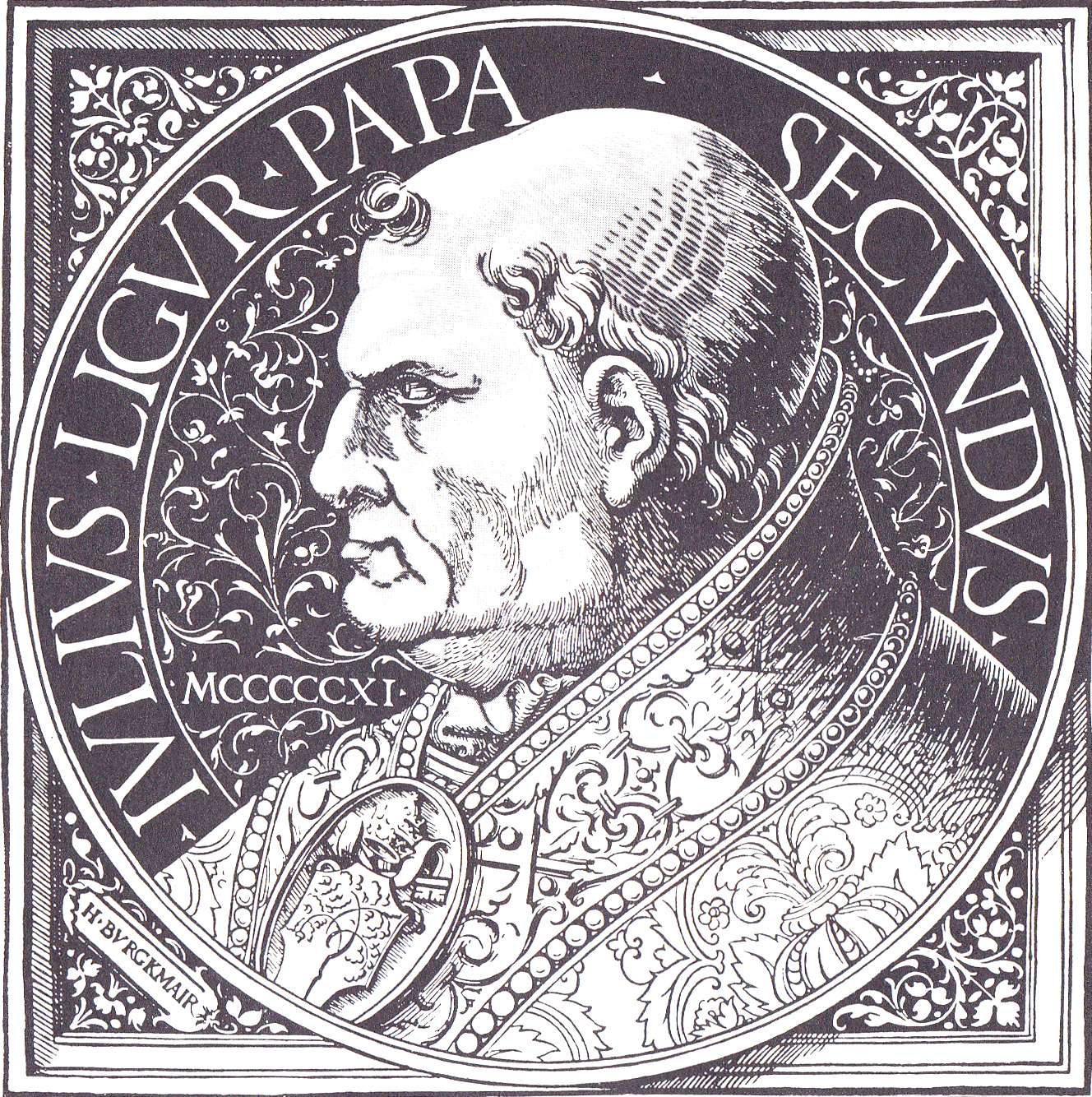|
Ludovico Trevisan
Ludovico Trevisan (November 1401 – 22 March 1465) was an Italian Catholic prelate, who was the Camerlengo of the Holy Roman Church, Patriarch of Aquileia and Captain General of the Church ( commander-in-chief of the Papal Army and the Papal Navy). He succeeded his rival Giovanni Vitelleschi, a fellow cardinal of military talent and inclination, as Bishop of Traù and Metropolitan Archbishop of Florence.Chambers, 2006, p. 45. Trevisan was also known as the Cardinal of Aquileia and the Cardinal Camerlengo. Early life Trevisan was born into a non-military family in Padua, then in the territory of the Republic of Venice, the son of Biagio Trevisano, a doctor in the arts and medicine.Miranda, Salvador. 1998.Consistory of 1 July 1440 (IV)" Like other war cardinals, such as Niccolò Fortiguerra and Giuliano della Rovere, Trevisan came from a humble background. His mother's maiden name was Mezzarota. His first name is sometimes also rendered Ludovico, Luigi, Luise, and Alvis ... [...More Info...] [...Related Items...] OR: [Wikipedia] [Google] [Baidu] |
His Eminence
His Eminence (abbreviation H.Em. or HE) is a style (manner of address), style of reference for high nobility, still in use in various religious contexts. Catholicism The style remains in use as the official style or standard form of address in reference to a cardinal (Catholicism), cardinal of the Catholic Church, reflecting his status as a Prince of the Church. A longer, and more formal, title is "His [or Your when addressing the cardinal directly] Most Reverend Eminence". Patriarchs of Eastern Catholic Churches who are also cardinals may be addressed as "His Eminence" or by the style particular to Catholic patriarchs, His Beatitude. When the Grand master (order), Grand Master of the Sovereign Military Order of Malta, the head of state of their sovereign territorial state comprising the island of Malta until 1797, who had already been made a Reichsfürst (i.e., prince of the Holy Roman Empire) in 1607, became (in terms of honorary order of precedence, not in the actual churc ... [...More Info...] [...Related Items...] OR: [Wikipedia] [Google] [Baidu] |
San Lorenzo In Damaso
The Minor Basilica of St. Lawrence in Damaso (Basilica Minore di San Lorenzo in Damaso) or simply San Lorenzo in Damaso is a parish and titular church in central Rome, Italy that is dedicated to St. Lawrence, deacon and martyr. It is incorporated into the Palazzo della Cancelleria, which enjoys the extraterritoriality of the Holy See. History Archaeological evidence suggests the site, like those of many churches in Rome, may have formerly housed a pagan temple. The first documentary evidence of a church at this site is the reference in the synod of Pope Symmachus of AD 499 of a ''Titulus Damasi''. According to tradition, in the AD 380s a basilica church was erected by Pope Damasus I in his own residence. This church is one of many in Rome dedicated to St. Lawrence, including the more ancient and then extra-urban , that was rebuilt by the same Pope Damasus I. The original basilica of San Lorenzo in Damaso was demolished by Cardinal Raffaele Riario, a nephew of Pope Sixtus I ... [...More Info...] [...Related Items...] OR: [Wikipedia] [Google] [Baidu] |
Apostolic Chancery
The Apostolic ChanceryCanon 260, ''Code of Canon Law'' of 1917, translated by Edward N. Peters, Ignatius Press, 2001. (; also known as the "Papal" or "Roman Chanc(ell)ery") was a dicastery of the Roman Curia at the service of the pope. The principal and presiding official was the Grand Chancellor of the Holy Roman Church, who was always the cardinal-priest of the Basilica di San Lorenzo in Damaso. The principal function of the office was to collect money to maintain the Papal army and to produce documents and correspondence for the pope. Pope Pius VII reformed the office when Emperor Napoleon I of France obviated the need for Papal armies. In the early 20th century the office collected money for missionary work. Pope Paul VI abolished the ''Apostolic Chancellary'' on 27 February 1973, transferring its functions to the Secretariat of State. History Before 1908 The role of ''bibliotecarius'' first appears in 781, and was responsible for the pope's books as well as redacting docu ... [...More Info...] [...Related Items...] OR: [Wikipedia] [Google] [Baidu] |
Liberal Arts
Liberal arts education () is a traditional academic course in Western higher education. ''Liberal arts'' takes the term ''skill, art'' in the sense of a learned skill rather than specifically the fine arts. ''Liberal arts education'' can refer to studies in a liberal arts degree course or to a university education more generally. Such a course of study contrasts with those that are principally vocational, professional, or technical, as well as religiously based courses. The term ''liberal arts'' for an educational curriculum dates back to classical antiquity in the West, but has changed its meaning considerably, mostly expanding it. The seven subjects in the ancient and medieval meaning came to be divided into the trivium of rhetoric, grammar, and logic, and the quadrivium of astronomy, arithmetic, geometry, and music. Since the late 1990s, major universities have gradually dropped the term ''liberal arts'' from their curriculum or created schools for liberal art disciplines ... [...More Info...] [...Related Items...] OR: [Wikipedia] [Google] [Baidu] |
Pope Julius II
Pope Julius II (; ; born Giuliano della Rovere; 5 December 144321 February 1513) was head of the Catholic Church and ruler of the Papal States from 1503 to his death, in February 1513. Nicknamed the Warrior Pope, the Battle Pope or the Fearsome Pope, it is often speculated that he had chosen his papal name not in honor of Pope Julius I but in emulation of Julius Caesar. One of the most powerful and influential popes, Julius II was a central figure of the High Renaissance and left a significant cultural and political legacy. As a result of his policies during the Italian Wars, the Papal States increased their power and centralization, and the office of the papacy continued to be crucial, diplomatically and politically, during the entirety of the 16th century in Italy and Europe. In 1506, Julius II established the Vatican Museums and initiated the rebuilding of the St. Peter's Basilica. The same year he organized the famous Swiss Guard for his personal protection and commanded a su ... [...More Info...] [...Related Items...] OR: [Wikipedia] [Google] [Baidu] |
Niccolò Fortiguerra
Niccolò Fortiguerra (also spelled Forteguerri) (1419 — 1473) was an Italian papal legate, military commander, and Cardinal (Catholicism), Cardinal. Born at Pistoia, he was related to Pope Pius II and is counted as a cardinal-nephew. He had a doctorate in utroque iure from the University of Siena. He became bishop of Teano in 1458, and Cardinal in 1460. In 1462 he campaigned in the Papal States against Sigismondo Pandolfo Malatesta, taking Fano. Later, in 1465, he defeated Deifobo d'Anguillara in battle. Fortiguerra was unable to participate in the Papal conclave, 1464, which elected Pope Paul II. He did participate in the Papal conclave, 1471 which elected Pope Sixtus IV. He endowed a library, the Biblioteca Forteguerriana, in Pistoia. He died at Viterbo in 1473 and was buried at his titular church in Rome, Santa Cecilia in Trastevere. The Cathedral of Pistoia has a cenotaph Monument to Niccolò Fortiguerri, partially sculpted in the 15th century by Andrea Verrochio, Verrochi ... [...More Info...] [...Related Items...] OR: [Wikipedia] [Google] [Baidu] |
Bishop Of Traù
Tragurium, Ancient Latin name of a city in Dalmatia (coastal Croatia), now called Trogir, was a bishopric until 1829 and a Latin titular bishopric until 1933."Diocese of Trogir (Traù)" ''Catholic-Hierarchy.org''. David M. Cheney. Retrieved February 29, 2016"Titular Episcopal See of Trogir" ''GCatholic.org''. Gabriel Chow. Retrieved February 29, 2016 History In 1050 Tragurium became the seat of a diocese also known as Traù (in curiate Italian) or Trogir in Croatian language, Croatian. On 1 May 1298 it lost territory to establish the Roman Catholic Diocese of Šibenik, Diocese of Šibenik. On 30 June 1828, the res ...[...More Info...] [...Related Items...] OR: [Wikipedia] [Google] [Baidu] |
Cardinal (Catholicism)
A cardinal is a senior member of the clergy of the Catholic Church. As titular members of the clergy of the Diocese of Rome, they serve as advisors to the pope, who is the bishop of Rome and the Head of the Church#Catholic Church, visible head of the worldwide Catholic Church. Cardinals are chosen and formally created by the pope, and typically hold the title for life. Collectively, they constitute the College of Cardinals. The most solemn responsibility of the cardinals is to elect a new pope in a Papal conclave, conclave, almost always from among themselves, with a few historical exceptions, when the Holy See is Sede vacante#Vacancy of the Holy See, vacant. During the period between a pope's death or resignation and the election of his successor, the day-to-day governance of the Holy See is in the hands of the College of Cardinals. The right to participate in a conclave is limited to cardinals who have not reached the age of 80 years by the day the vacancy occurs. With the pope ... [...More Info...] [...Related Items...] OR: [Wikipedia] [Google] [Baidu] |
Papal Navy
The Papal Navy (, "Pontifical Navy"; ) was the navy, maritime force of the Papal States. Loosely constituted, it was sporadically extant from approximately the Battle of Ostia (849) during the pontificate of Pope Leo IV, Leo IV until the ascension of Pope Leo XIII in 1878 (though the Navy had ceased all operations in 1870), when he sold the last remaining Papal warship, the Papal corvette Immacolata Concezione, ''Immacolata Concezione''. The Papal Navy was separate from the Papal States#Papal military, Papal Army, a varying combination of Military volunteer, volunteers, mercenary, mercenaries, and Catholic Military order (religious society), military orders, disbanded in 1870. The modern Vatican City State does not maintain any formal naval or maritime forces and does not include any significant bodies of water. History Birth Originally protected by the Byzantine navy, the Papal States found itself in need of a naval force of its own following a Islam in Italy#Emirates in Apulia, ... [...More Info...] [...Related Items...] OR: [Wikipedia] [Google] [Baidu] |
Papal Army
The Papal States ( ; ; ), officially the State of the Church, were a conglomeration of territories on the Italian peninsula under the direct sovereign rule of the pope from 756 to 1870. They were among the major states of Italy from the 8th century until the unification of Italy, which took place between 1859 and 1870, culminated in their demise. The state was legally established in the 8th century when Pepin the Short, king of the Franks, gave Pope Stephen II, as a temporal sovereign, lands formerly held by Arian Christian Lombards, adding them to lands and other real estate formerly acquired and held by the bishops of Rome as landlords from the time of Constantine onward. This donation came about as part of a process whereby the popes began to turn away from the Byzantine emperors as their foremost temporal guardians for reasons such as increased imperial taxes, disagreement with respect to iconoclasm, and failure of the emperors, or their exarchs in Italy, to protect Rom ... [...More Info...] [...Related Items...] OR: [Wikipedia] [Google] [Baidu] |




